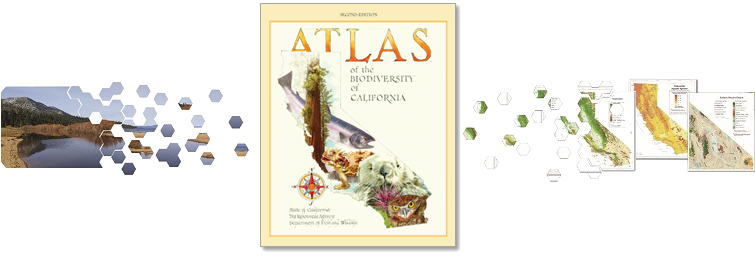
On April 22nd we celebrate Earth Day, and the natural wonders of California and beyond. The Department of Fish and Wildlife would like to proudly announce on this special day that the second edition of the Atlas of the Biodiversity of California has been published!
The Atlas is filled with beautiful maps, stunning photographs, and captivating illustrations. It features dozens of articles that cover an array of topics, such as the state's remarkable geography, how we measure biodiversity, and examples of the complexity and uniqueness of many of California's treasured wildlife habitats. The Atlas explores why we should care about biodiversity, what some of the current threats are to biodiversity, and what preservation and restoration strategies are underway for the protection of the state’s uniquely diverse species and ecosystems.
Visit our Atlas web page to view the full Atlas of the Biodiversity of California, 2nd Edition or selected sections. Physical copies are being distributed to all public libraries of California, as well as many academic libraries in the state. Check out your local library in the coming months to see a hard copy of this magnificent book.